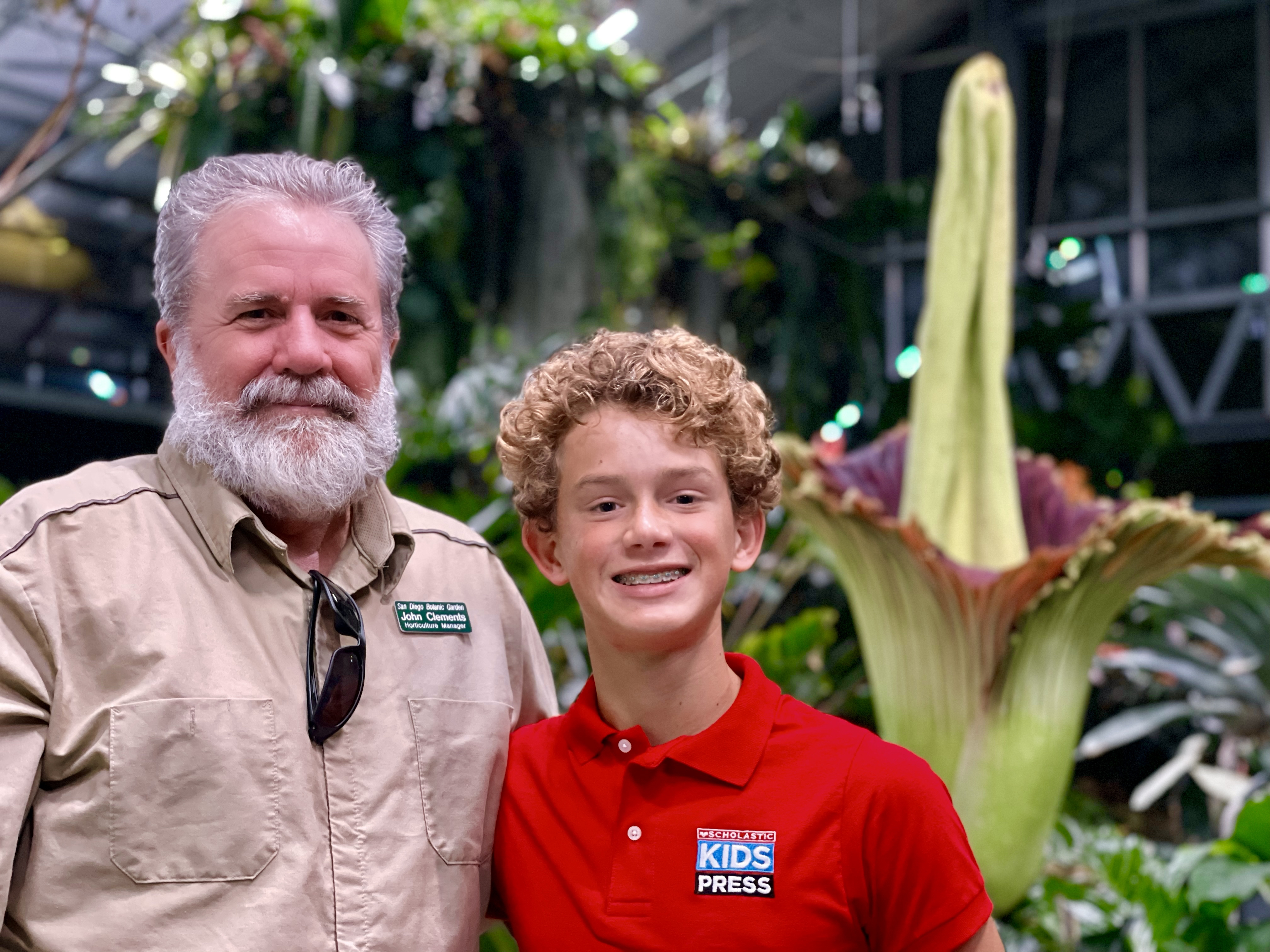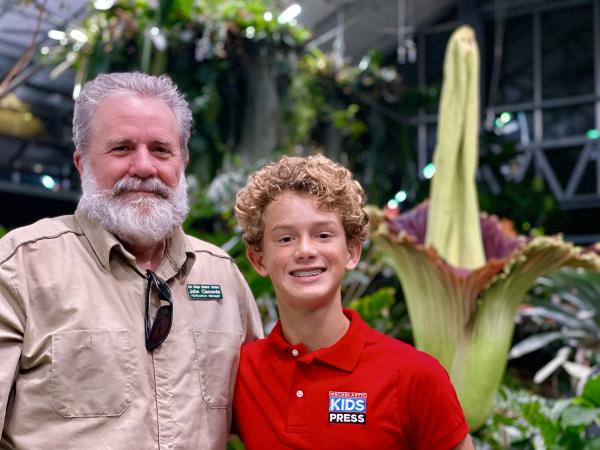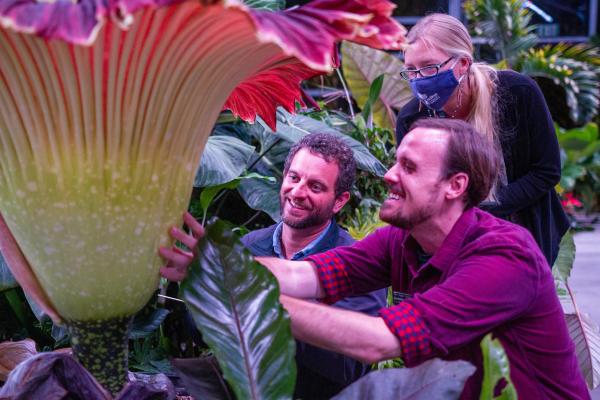KID REPORTERS’ NOTEBOOK
Corpse Flowers Bloom in San Diego


Quade and John Clements, horticulture manager at the San Diego Botanic Garden, with a corpse flower nicknamed “Stinking Beauty”
What is almost 6 feet tall, 3 feet wide, open for just 48 hours, and super-smelly? Meet “Stinking Beauty,” a plant that is currently drawing the world’s attention to the San Diego Botanic Garden (SDBG) in California.
Stinking Beauty’s official name is Amorphophallus titanum, or Titan Arum. It’s commonly known as a “corpse flower” because it smells like rotting meat.
The endangered plant is native to the island of Sumatra in Indonesia. It produces the largest bloom of any flowering plant in the world.
Each plant requires up to 10 years to gather the energy needed to bloom. Stinking Beauty began to bloom on November 18. It is the second corpse flower to open at the SDBG this year. The first, “Jack Smellington,” opened on October 31. Both plants’ nicknames were chosen from a contest open to the public.
“This is a once-in-a-lifetime event for people to see one in bloom,” said John Clements, horticulture manager at SDBG. “We average about two blooming events per year in the country. For us to have two in a year is very, very, VERY unusual.”
This month’s flowerings have been livestreamed, allowing more than 5,000 online visitors to enjoy the garden giants.

The corpse flower is native to Sumatra, an island in Indonesia.
A HOT, STINKY POLLINATOR
When the corpse flower blooms, the red spathe, or petal, in the center opens, uncovering hundreds of flowers. The plant’s spadix, or spike, produces a strong odor, and its temperature can climb to 97°F. This attracts pollinators like flies and carrion beetles, which are native to Sumatra. The insects consume decomposing plants and animals, and Titan Arum imitates their odor and appearance.
“The stink changes and grows in intensity,” Clements explained. “It goes from stinky feet, to a stinky trash can in the sun, to rotten garlic and onions, to rotten fish, to the smell of a decaying animal.”
PRESERVING “A WONDERFUL ODDITY”
In 2018, the International Union for Conservation of Nature listed Titan Arum as endangered. Deforestation in Indonesia, caused largely by oil palm crops and logging, has put the corpse plant at risk of extinction. SDBG has joined in a worldwide effort to try to save it.
“There are only about a thousand in the wild,” Clements said. “It’s a wonderful oddity. It’s so singularly unique that it would be a shame if it ceased to exist on the planet.”
The botanists at SDBG are grateful that their corpse flowers are drawing so much attention. “The main goal in plant conservation is making rare plants less rare,” said Jeremy Bugarchich, SDBG’s curator. “The best way to do that is to propagate, grow, and share these plants with everyone.”
